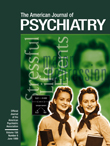Multiples: No Amnesia for Child Abuse
To the Editor: The intriguing article by Dorothy Otnow Lewis, M.D., et al. purports to demonstrate that there is objective evidence about childhood maltreatment and dissociative states in 12 murderers well antedating the onset of their legal problems, thus mitigating the potential for malingering.
A problem is that from this presentation it cannot be determined what data actually come from records preceding legal difficulties and clearly pertain to the issues of abuse and dissociative identity disorder and what do not.
Dr. Lewis and colleagues report that there are childhood medical, psychiatric, and foster care records that document abuse. It would serve the cause of clinical science best if there were publicly accessible records to document this report. Fortunately, the development of electronic record transfer and the Internet make this possible. Properly documented records that protect the proband’s privacy are entirely possible and can be made available by Internet access.
We urge Dr. Lewis and colleagues to consider making the extensive archival dossiers available for secondary analysis. This does not imply any doubt regarding Dr. Lewis and colleagues’ honesty or professional abilities. However, the fact remains that different assessments of data are possible, and in a controversial area, fostering such assessments rather than simply reporting conclusory statements clearly advance the field. The expense and trouble may be daunting. However, once such a goal is subscribed to, funding mechanisms may come into being.
Recent technological advances would make this possible for all scientific journals. Data-dependent articles could and should make such data available for what amounts to an extended postpublication peer review. The failure to do so in the past has led to problematic reports. The suggestion that journals be held responsible for the detailed review of primary data would probably paralyze journal production. However, the public availability of such data allows for continued informed discussion. Lack of public availability engenders continued doubt about the substantive basis of the conclusions.
Also, widespread secondary analyses of these data, which agree with the authors, can be of tremendous value in overcoming a substantial level of a priori doubt. These authors should be interested in pursuing this goal. It would also help amplify the understanding of these complex issues if data were provided concerning possible neurological insult.



